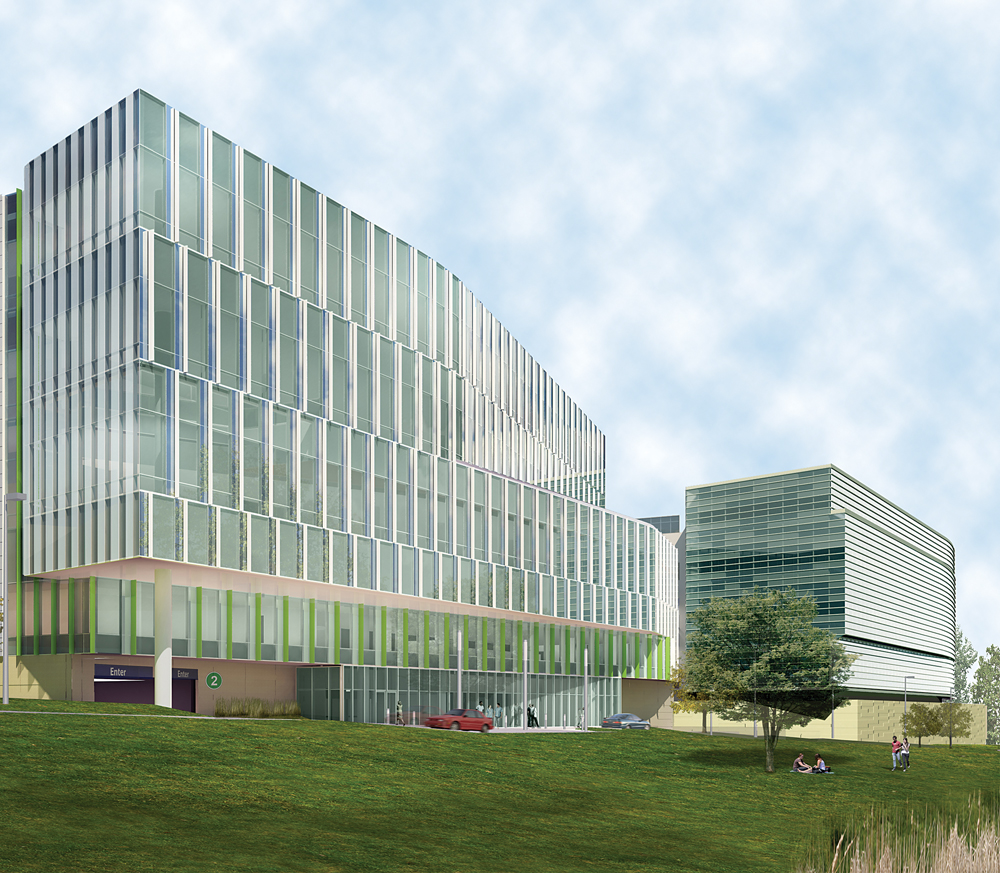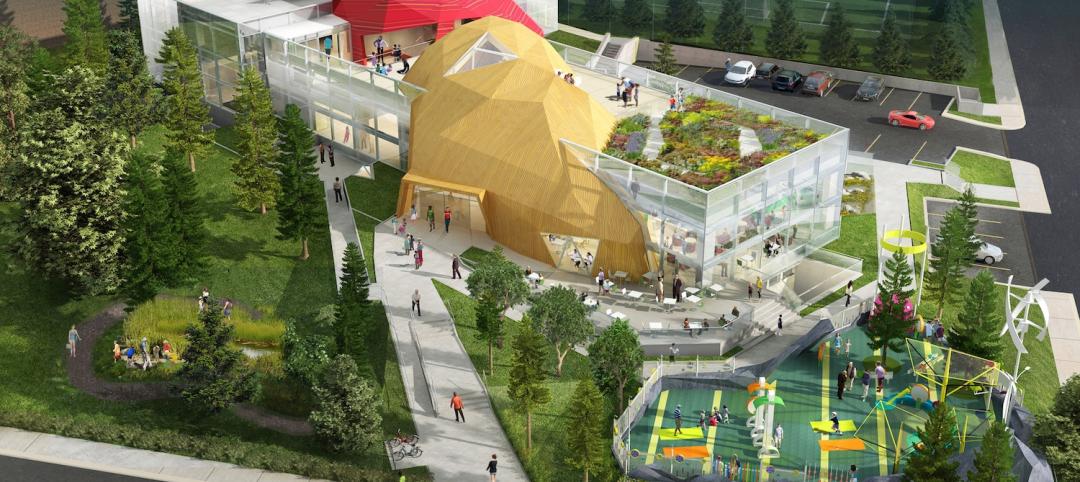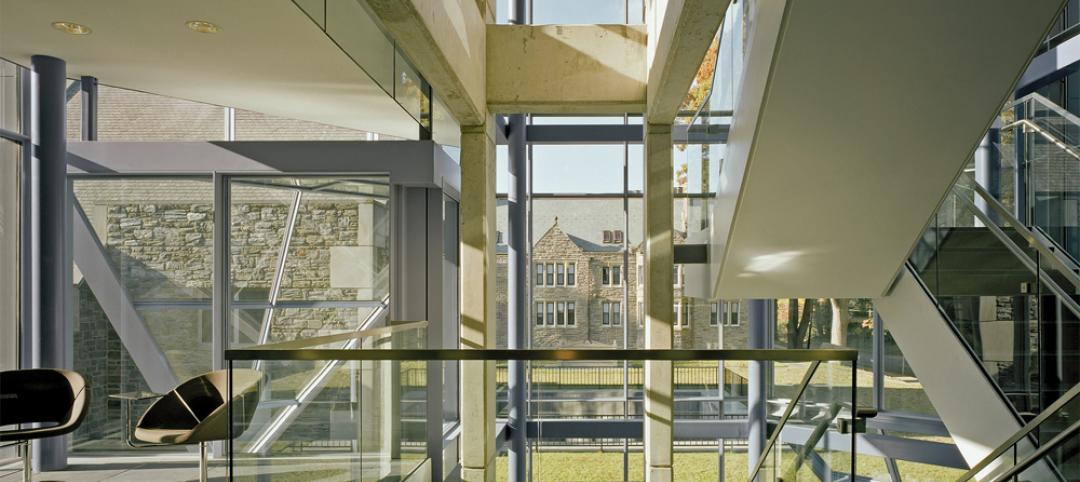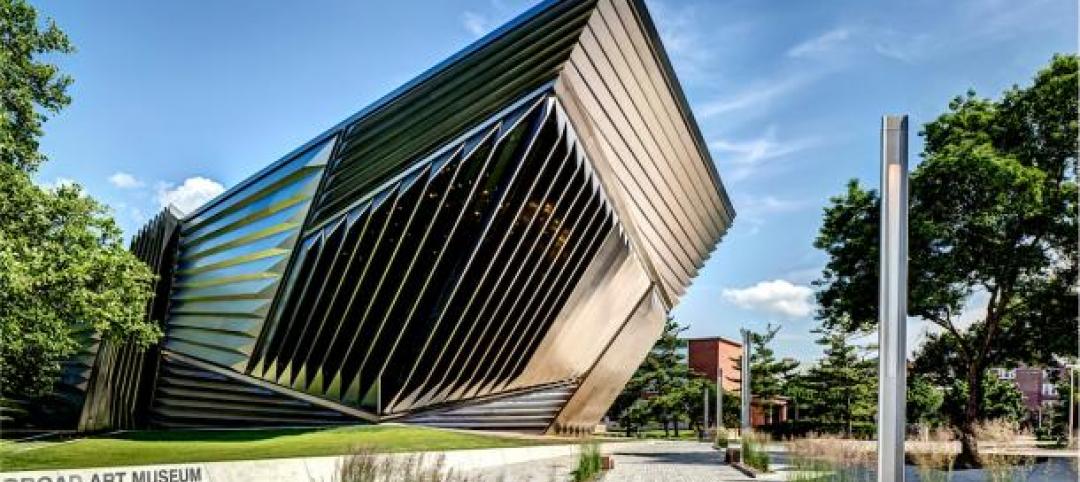Editor's note: This article was originally published as part of BD+C's two-part March 2014 Healthcare Facilities Report. Read the first installment of the report, "How your firm can win more healthcare projects."
For BD+C's March 2014 Healthcare Facilities Report, we interviewed seven healthcare planning and design experts from major healthcare organizations, including Sutter Health, Ascension Health, and CHE Trinity Health. They cited the following factors that Building Teams need to keep in mind on their healthcare projects:
1. CONSOLIDATION OF HEALTHCARE FACILITIES
A large organization like Ascension can find savings through an examination of its national property portfolio. “We have to look at each region,” says Ascension SVP Bob McCoole. “Does it have 10 half-full physician’s offices? We have to look at all opportunities to consolidate and manage space more efficiently.”
In some cases, the result of facilities consolidation isn’t to reduce the overall system footprint, but to expand it. MaineGeneral replaced two existing hospitals, totaling about 400,000 sf, with the new 640,000 sf Alfond Center for Health. The new institution holds 192 inpatient beds, a reduction from the 225 beds that the two old hospitals held. Much of Alfond’s non-inpatient space is taken up by outpatient services, and the entire Thayer facility (one of the two old hospitals) is being converted to outpatient services. So, this consolidation of inpatient capacity enabled a big jump in outpatient service capacity.
2. EFFICIENCY AND STANDARDIZATION
Much of a healthcare property executive’s time is spent on finding better, more efficient designs and rolling them out systemwide in the form of standards. In recent years, CHE Trinity had been focused on standards such as cost-per-bed based on market norms. “We’re moving toward developing norms for department and key room sizes that are based on group wisdom, with input from outside firms as well as in-house personnel,” says CHE Trinity Health’s Young.
In some cases, a small, dedicated staff of passionate hospital staffers has led the push for new standards to improve efficiency. Froedtert staff has gone through a concerted effort to analyze process flow using mapping and simulation tools. These exercises are essential to guide design, says Balzer. “You want visioning and modeling to inform design, rather than have them happen simultaneously,” he says. “If you bring in architects too early in the process, you will have a hard time stopping them from sketching drawings before you are finished gathering input.”
Sutter is a leader among major healthcare systems in adopting Lean design principles for construction and clinical practices. This had led to an innovative use of technology, with several sites using or testing kiosk patient registration. “They are similar to what you see at airports,” says Sutter Health’s Conwell. “You swipe your Sutter card or a credit card and the monitor tells you to go to a particular exam room.” This reduces waiting times for patients—a metric many healthcare systems are trying to improve.

Reception desk at the 640,000-sf MaineGeneral Medical Center, which consolidated two campuses that were 20 miles apart. Facilities include a 16-room interventional suite, a 27-bed ED, a 25-room imaging center, a cardiac gym, a conference center, and a two-story medical office building. Photo: © Anton Grassl/Esto
3. SPACE FLEXIBILITY
Facing formidable unknowns associated with implementing the Affordable Care Act, hospital designers have to bake in flexibility. Reducing walls and barriers so clinical areas can easily be reconfigured is a common tactic—a particularly important one as medical professionals learn to work more collaboratively. “We don’t want to do anything that precludes people from working together,” says Sutter Health’s Scheuerman. Sutter has also made exam rooms specialty-agnostic by providing mobile equipment carts that make any exam room capable of serving multiple specialties.
Spaces that can pull double duty can be valuable. One recent CHE Trinity project included six flex rooms on inpatient floors, to be used initially as rehab space. Should demand require it, these rooms can be easily converted to inpatient use.
Infrastructure planning is another area where providing flexibility is paramount. “We don’t want infrastructure to become dated, but we also don’t want to burden our locations with investments they don’t need,” says Froedtert’s Balzer. “If we think we might need an MRI at a location in a few years, we might upsize the electrical feeder into the building now, which can be done at relatively low cost, and up the distribution, if necessary, later.”
4. IMPROVING PATIENT OUTCOMES
With the ACA pushing hospitals hard to produce better patient outcomes, using both a carrot (financial incentives) and a stick (penalties), healthcare Building Teams need to be actively involved in research initiatives that could reduce infections, speed recovery periods, and improve medical staff performance.
Froedtert was one of the first participants in the Center for Health Design’s Pebble Project (www.healthdesign.org/pebble), an effort to compile and distribute research related to quality of care and building design. “For anything we design, we refer to the Pebble database and see what research is out there,” says Balzer.
MaineGeneral’s Alfond project was designed with evidence-based research in mind. When considering the use of generous fenestration, for instance, research on the benefits of daylight was factored in. “If it improves staff satisfaction and patient recovery, plentiful daylighting can be worth the extra expense,” says Stein. MaineGeneral also installed a pneumatic tube system to transport lab specimens to the central lab, instead of having staff wheel the samples around on carts. The reduced turnaround on test results has improved quality of care along with staff efficiency.

CHE Trinity Health’s 237,000-sf Holy Cross Germantown Hospital will provide medical/surgical, obstetrics, and psychiatric services on the campus of Montgomery College when completed later this year. The facility, the first new hospital in Montgomery County, Md., in more than 30 years, will include 98 patient rooms, five ORs, 14 emergency beds, five labor rooms, an eight-bassinet neonatal unit, and an on-site medical office facility. Building Team: SmithGroupJJR (architect, medical planner, programming, interiors, lighting, landscape architecture), Leach Wallace/Syska Hennessy (MEP), McMullan & Associates (SE), CBRE (owner’s rep), and Whiting-Turner (CM). KLMK (now CBRE Health) served as owner’s project manager. Photo: courtesy SmithGroupJJR and CHE Trinity Health
5. COST-CUTTING AND IMPROVED EFFICIENCY BY DESIGN
Hospital systems are breaking the design mold to cut costs. In the past, every major medical discipline had its own reception area. No more. Now, as many as four different disciplines may share a single reception space.
Healthcare providers are also struggling with how elaborately appointed their facilities have to be to attract patients. Finding the right balance between spending enough on attractive furnishings and finishes to be competitive, versus overspending on ornamentation, is a constant dilemma.
If Ascension’s McCoole had his way, the whole industry would take a pill and slow down a bit on accoutrements. He points to the use of precast concrete in the construction of the recently completed St. Vincent’s HealthCare facility in Jacksonville, Fla. No fancy twisted elevations here: the building’s corners were kept at an economical 90 degrees. “It won’t win any design awards,” says McCoole. “We included nice lobbies with terrazzo floors, but that’s the extent of the ornamentation.”
CHE Trinity’s new strategy of employing commissioning agents early in the design process is already a proven money-saver, says Young. Commissioning experts found that plans for the central plant of a new hospital had improperly routed the piping. A redesign yielded a much smaller central plant. and the energy savings will total millions of dollars over the lifespan of the facility, Young says.
Life cycle analysis to evaluate sustainable elements in hospital projects is a calculus that is constantly in flux. For example, Froedtert recently mandated LED lighting as the standard on new construction and major renovations as LED prices continue to drop.
6. BIM, IPD, AND PREFABRICATION
Healthcare organizations increasingly demand some flavor of integrated project delivery—formal or otherwise—on major projects. “We’re using it in spirit, but not in contracts,” says Balzer. All of our experts told us that collaboration among Building Team member firms is a must.
The major Building Team players should also be BIM-savvy. Healthcare organizations are increasingly looking to use BIM throughout a building’s life cycle. “Our maintenance staff is instrumental in driving our standards and how we leverage BIM,” says Froedtert’s Balzer.
Prefabrication of parts and units is also becoming a more frequently used tool. CHE Trinity uses off-site prefab for above-ceiling utilities, and sometimes on bathrooms. The central plant on a new 80-bed hospital currently under design will be prefabricated—a first for CHE Trinity, says Young.
“Prefab is near and dear to my heart,” says Froedtert’s Balzer. “We’re looking at the feasibility of offsite construction of exam rooms for a Advanced Care Center. Five years from now, we expect to be using prefab more heavily."
Read the first installment of BD+C's March 2014 Healthcare Facilities Report, "How your firm can win more healthcare projects."
Related Stories
| Apr 23, 2014
Architecture Billings Index dips in March
The March ABI score was 48.8, down sharply from a mark of 50.7 in February. This score reflects a decrease in design services.
Sponsored | | Apr 23, 2014
Ridgewood High satisfies privacy, daylight and code requirements with fire rated glass
For a recent renovation of a stairwell and exit corridors at Ridgewood High School in Norridge, Ill., the design team specified SuperLite II-XL 60 in GPX Framing for its optical clarity, storefront-like appearance, and high STC ratings.
| Apr 22, 2014
Transit-friendly apartment building now under construction
The new $44 million community is situated on eight acres, directly adjacent to the local Park-n-Ride, and a quick walk from a nearby light rail station.
| Apr 22, 2014
Bright and bustling: Grimshaw reveals plans for the Istanbul Grand Airport [slideshow]
In partnership with the Nordic Office of Architecture and Haptic Architects, Grimshaw Architects has revealed its plans for the terminal of what will be one of the world's busiest airports. The terminal is expected to serve 150 million passengers per year.
| Apr 21, 2014
10 design-build best practices
Design-build requires more than a good contract and appropriate risk allocation, says the DBIA. Everyone from the owner to the subcontractors must understand the process, the expectations, and fully engage in the collaboration.
| Apr 18, 2014
Multi-level design elevates Bulgarian Children's Museum [slideshow]
Embodying the theme “little mountains,” the 35,000-sf museum will be located in a former college laboratory building in the Studenski-grad university precinct.
| Apr 17, 2014
Online mapping tool helps teams determine multifamily project tax credit eligibility
Accounting and advisory firm Baker Tilly has launched a new, interactive online mapping tool that helps users determine if a business or development project may qualify for the New Markets Tax Credit or Low-Income Housing Tax Credit program.
Sponsored | | Apr 17, 2014
Technology enables state transportation agency to make the leap to digital design review
Earlier this month, my colleague and I presented a session to a group of civil engineers and transportation agencies about the tech trends in the AEC space. Along with advice on how to prepare your plan for controlled collaboration, we also talked through some practical use cases. One such use case was especially interesting, as it outlined a challenge not unfamiliar to government agencies who are contemplating the leap from paper to digital processes: how to securely migrate workflows.
| Apr 16, 2014
Upgrading windows: repair, refurbish, or retrofit [AIA course]
Building Teams must focus on a number of key decisions in order to arrive at the optimal solution: repair the windows in place, remove and refurbish them, or opt for full replacement.
| Apr 15, 2014
12 award-winning structural steel buildings
Zaha Hadid's Broad Art Museum and One World Trade Center are among the projects honored by the American Institute of Steel Construction for excellence in structural steel design.















